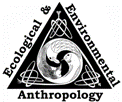Wildlife Damage Management, Internet Center for
Date of this Version
November 2006
Abstract
One of the hallmarks of the discipline of anthropology is its holistic approach to the study of what it means to be human. A perennial challenge to the discipline, however, is the question of whether biological and cultural anthropology can truly coexist given their traditionally disparate epistemologies and methodologies. In this paper, I argue that the emerging field of ethnoprimatology, which focuses on the ecological and cultural interconnections between human and nonhuman primates, has real potential to bridge these two subfields. I support my argument by discussing the theoretical rationale of an ethnoprimatological approach with regard to the notion of “natural environments” in primate ecology and conservation, as well as in anthropology in general. I also discuss the practical rationale of such an approach in the contemporary era where anthropologists and others are increasingly realizing that conservation needs to take place within a broader ecological framework that includes the human dimension. By drawing from recent research in ethnoprimatology, I discuss the relevance and power of specific methodologies from biological anthropology, cultural anthropology, and conservation management in making this a multifaceted, integrative, and robust approach to anthropological inquiry.

